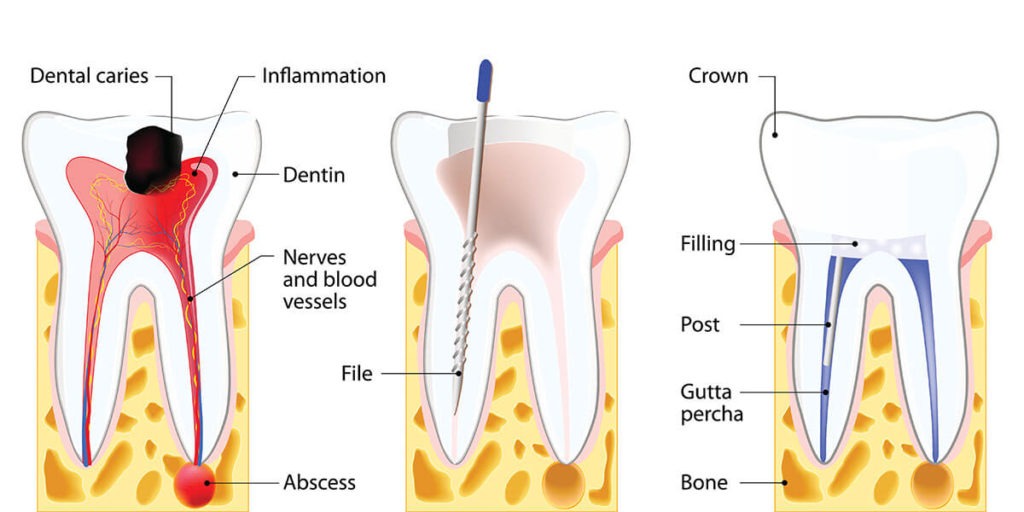Nerve damage can be caused by array reasons from fillings that leak, decay in the teeth, bacteria in the body, or damage due to trauma. These causes do not necessarily lead to root canals, but if left untreated it may be one of your options.
A root canal is a treatment that is meant to remove the nerve structure from the inside of the tooth that has been damaged or has an infection. It is also referred to as ‘endodontics’.
The pulp and nerve tissue is found deep within the tooth. For this treatment, the internal areas that are within the tooth and have sustained damage are removed, and the space that is left is filled in with material that seals the tooth. Once this material has been put in, a crown is put in place over the tooth as a way of protecting the tooth from fracturing.


